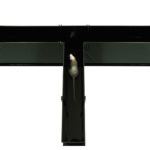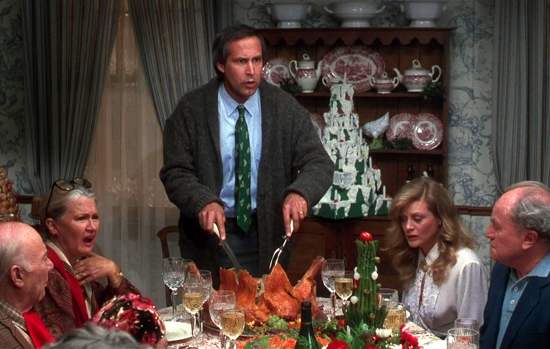 Over my lifetime I have frequently identified myself as being “in a rut.” I do the same things day in and day out. I eat at the same places for lunch. I pal around with the same people. It can be a little boring, but comfortable. And therein lies the rub. It’s comfortable. But does that mean I should stay in the rut or not? Here’s why we like our ruts and how to tell if it’s time to leave them behind.
Over my lifetime I have frequently identified myself as being “in a rut.” I do the same things day in and day out. I eat at the same places for lunch. I pal around with the same people. It can be a little boring, but comfortable. And therein lies the rub. It’s comfortable. But does that mean I should stay in the rut or not? Here’s why we like our ruts and how to tell if it’s time to leave them behind.
I learned my rut from an early age. Psychologists call it operant conditioning. We have a tendency to repeat behaviors that satisfy a need. If the behavior consistently satisfies a need, then that behavior can become our rut.
As an example, in psych classes in college, we put a rat into a choice box. He could go left or right. To the left he would get a slightly disturbing electric shock. To the right, a small 45 mg pellet of food. Since we had starved him to 75% of his free-feeding weight, he had a serious need for food, so it didn’t take long until we had a very right-turning rat.
Then we tested whether this behavior (rut) could be learned if we put a shock between the rat and his food. So we shocked both left and right, but still fed him to the right. Now we had a rat that had learned to turn right, endure pain, and satisfy his hunger.
Believe it or not, this behavior (turn right, get shocked, find a pellet) became the rat’s comfort zone.
Putting up with the pain
As I look back on times when I’ve been in a comfort zone, I realize that, while the end result of a behavior pattern was often what I needed (gold stars, recognition, money, affection, etc.) there were frequently one or more shocks along the way. As a result, my rule became “I have to get shocked to get what I want.” My rut.
Ever know someone who subverted potential success on a regular basis? My client list over the years has been full of them. From early childhood, they learned they could get what they needed (usually attention or recognition) by being drama queens (or kings). “See,” they say, “I can never get that gold star without something going wrong.”
They get two rewards for this…two 45 mg pellets. First, they get attention and sympathy from those close by. And second, they get to be right. And the more often they can run through this rat maze, the more permanent the rut will become.
Seeing the problem
So what can I do if I recognize myself in one of these ruts?
Well, that’s the first step. Recognizing I actually am in a rut. I repeat my pattern over and over, possibly going through some painful or at least aggravating activity just to get what I need to feel comfortable. And I really don’t like that aggravating part, but I do like the recognition. For example, let’s say I really don’t like my job (and I bitch about it all the time), but I do like the paycheck.
Recognition is also the first step of a 12-step recovery program. Structurally, there’s very little difference between an addiction to alcohol or narcotics and going through painful experiences just to get my pellet (or recognition, or affection, or whatever).
Determining when to stay in a rut
The litany of possible ruts is endless. Spousal abuse. Self-worth issues. Withdrawal. Acting out. They’re all ruts with costs we sometimes don’t see. Pellets with shocks we conveniently forget about.
Wait a minute, Kim. I eat at the same restaurant for lunch. I’m not a deranged psycho!
That may be accurate. Then you’re most likely choosing to stay in the rut, and that’s fine because it’s working for you.
The difference between a rut you can live with and have fun in and one that can beat you down and eat you up is the amount of shock you have to go through to get your pellet.
If I’m in one where personal costs are low, then it’s fun. For example, I have my favorite “Cheers”-type bar in St. Louis—everybody does know my name. I choose to keep going there because it’s comfortable and I know how to limit my consumption.
In other ruts, the costs were high. And I didn’t see them. Perhaps I even shut my eyes while the pain was being inflicted, the outcome being more than enough to make up for it. Shut eyes means I didn’t recognize what was going on. Pre-step one.
The solution
There are two things that can happen once I see and measure the painful part:
A. I can decide the outcome isn’t worth the pain. I’m well fed now and don’t need to put up with the shock in order to eat.
B. I can look right at the issue and admit that my need for pellets is too great and continue to put up with the shock.
If I take position A, I’ve accessed my Learner/Researcher, seen the data and decided to get out of my rut.
If I take position B, I’ve simply continued to function in my Knower/Judger, letting go of any real control I have over my life. That’s an addiction.
I don’t mean to be a downer here. But I see good people every day whose lives seem totally in order and who, on the surface, appear to be making great decisions. But they are really putting up with pain in the form of bosses, spouses, geographical restrictions, personal head trash, glass ceilings, money, or addictions—all for the sake of meeting some emotional need.
Do you really want to get out of the rut? Measure the pain. Open your eyes. Decide that it’s really OK. And stay. Could continue to be fun. I love my favorite pub!
And when you recognize it’s not OK, you have, at least for the moment, accessed your L/R. That’s your window of opportunity. Make a different decision



